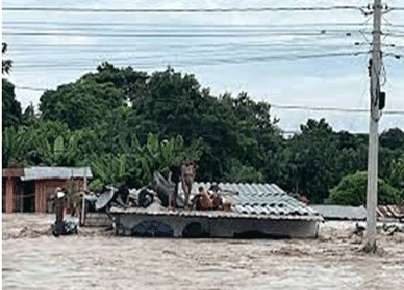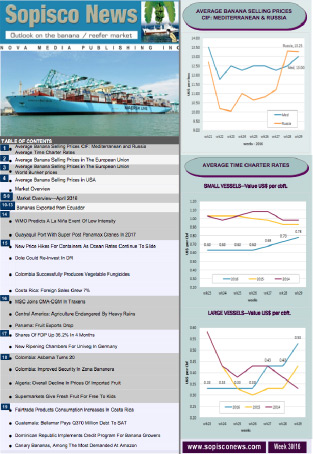El Niño Officially Formed
2023-06-16

Meteorologists announced that an early bird El Niño has officially formed, likely to be strong, warp weather worldwide, and give an already warming Earth an extra kick of natural heat.
The National Oceanic and Atmospheric Administration on June 8 issued an El Niño advisory, announcing the arrival of the climatic condition. It may not entirely be like the others.
It formed a month or two earlier than most El Niño does, which "gives it room to grow," and there's a 56% chance it will be considered strong and a 25% chance it reaches supersized levels, said climate scientist Michelle L'Heureux, head of NOAA's El Niño/La Niña forecast office.
"If this El Niño tips into the largest class of events, it will be the shortest recurrence time in the historical record," said Kim Cobb, a climate scientist at Brown University. Such a short gap between El Niño leaves communities with less time to recover from damages to infrastructure, agriculture, and ecosystems like coral reefs.
Usually, El Niño mutes hurricane activity in the Atlantic, relieving coastal areas in states from Texas to New England, Central America, and the Caribbean, weary from recent record busy years. But this time, forecasters don't see that happening because of record-hot Atlantic temperatures that would counteract the El Niño winds that normally decapitate many storms.
Hurricanes strengthen and grow when they travel over warm seawater, and the tropical regions of the Atlantic Ocean are "hot," said Kristopher Karnauskas, associate professor at the University of Colorado Boulder. So this year, NOAA and others predict a near-average Atlantic hurricane season.
In the past, a strong El Niño has led to record global warmth, like in 2016 and 1998. Scientists earlier this year said next year is more likely to set a record heat, especially because El Niño usually reaches peak power in winter. But this El Niño started even earlier than usual.
"The onset of El Niño has implications for placing 2023 in the running for warmest year on record when combined with climate-warming background," said University of Georgia meteorology professor Marshall Shepherd. Earlier this year, the world got out of an unusually long-lasting and strong La Niña — El Niño's flip side with cooling. The 1997-1998 El Niño event was one of the most potent El Niño-Southern Oscillation events in recorded history, resulting in widespread droughts, flooding, and other natural disasters across the globe. In Central Ecuador and Peru, during the 1997-98 Niño, rainfall was more than ten times the average, which caused flooding, extensive erosion, and mudslides with loss of lives and destruction of homes and food supplies.
The 1997-98 El Niño in Ecuador cost the lives of at least 286 people and left some 30,000 homeless.









